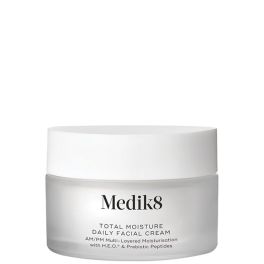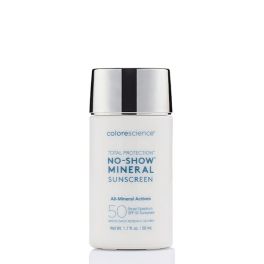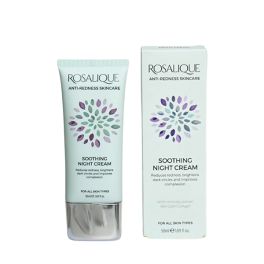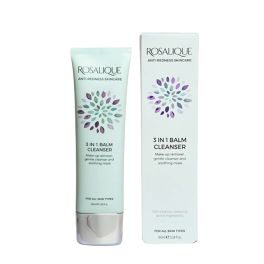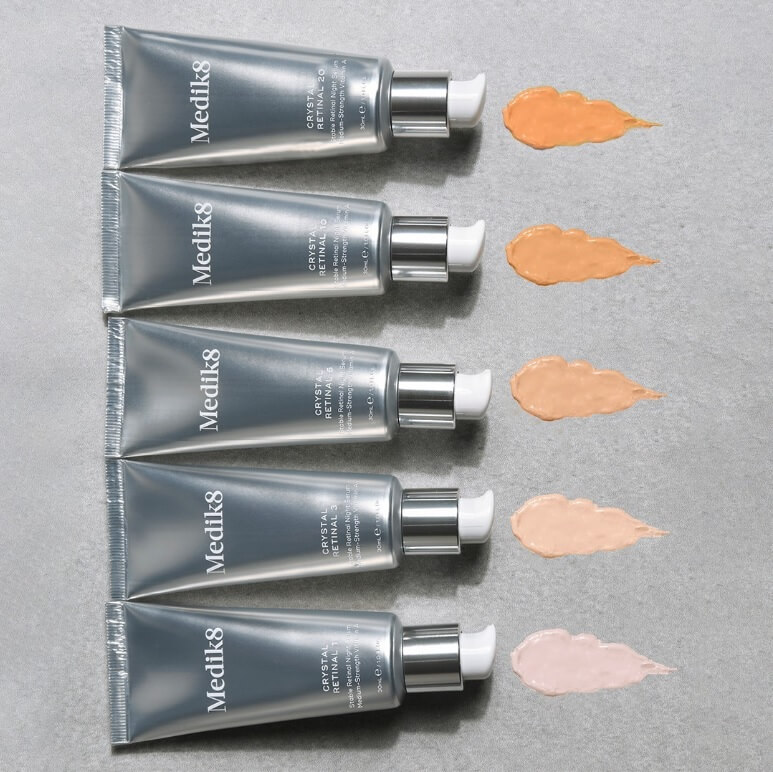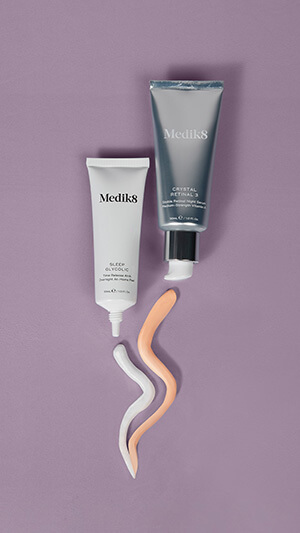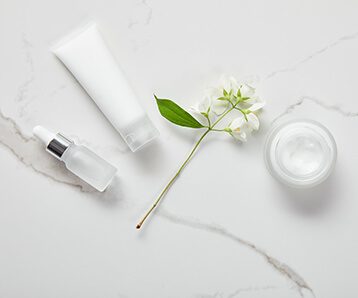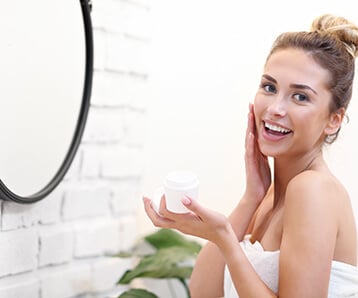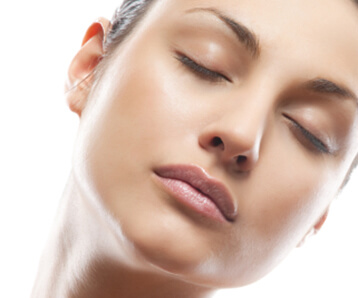What Is The Difference Between Glycolic Acid And Retinol? Posted on 5 Mar 2024
Pick up any fashion magazine, read any beauty article, or scroll through your own Instagram feed and you are bound to see information about alpha hydroxy acid, chemical exfoliant, glycolic acid products, and retinol products being the gold standard of anti-ageing products. But, what exactly is the difference between them all and how do they work differently?
Should you be using glycolic acid and retinol? Or just one or the other? How do you use them and when? Which one is better? It can feel like a real skincare minefield.
Acids, Retinol, Or Both?
When it comes to anti-ageing there are some essential key ingredients that everyone should be using in their skincare routine, such as SPF, antioxidants, and hyaluronic acid to tackle common skin concerns like fine lines and wrinkles, dry skin, dark spots, and uneven skin tone.
Glycolic acid and retinol are two of the most popular exfoliating ingredients. Both acids and retinoids do everything from resurfacing the skin to fading pigmentation to softening fine lines and wrinkles so how do you choose which one is best?
Glycolic acid and retinol are the perfect partners that have been widely researched. They have been found to work in perfect harmony with one another. In fact, when used together, they can provide enhanced results for your best skin ever. When used correctly, the two help to regulate exfoliation in different layers of the epidermis to deliver comprehensive exfoliation.
⬆️ Glycolic acid works in the upper layers
⬇️ Retinol works in the deeper layers
Here we go into more detail about both glycolic acid and retinol plus all their key benefits. Keep on reading to learn more.
What Does Glycolic Acid Do?
Before going any further, it's important to know what the active ingredients that you use on your skin actually do.
Glycolic acid is an alpha hydroxy acid (AHA) made from the sugar cane plant. Glycolic acid loosens the bonds between dead skin cells on the surface of the skin making it easier to remove dead skin from the top layer of the complexion. Once these dead skin cells are removed, new youthful cells are revealed.
By regularly removing the top layer of dead skin cells, you uncover brand new ones which are good for a number of reasons. Firstly, your skincare products will penetrate the skin better meaning better end results. Also, collagen production and cell turnover reduces within mature skin so a glycolic acid treatment will aid in speeding it up to reduce the appearance of fine lines and wrinkles.
Glycolic acid promotes a youthful appearance in your skin, preventing dry skin and dullness that can occur due to a buildup of dead cells on the surface of your skin. It also improves skin texture by making skin smoother, reduces hyperpigmentation, and decongests clogged pores.
In summary, glycolic acid works on the upper layers of the skin tone and provides instant results.
What Does Retinol Do?
Retinol, on the other hand, is a derivative of vitamin A and retinoic acid. Retinol is more of a long-term solution for healthy skin. Retinol is often used for treating acne, acne scarring, and to prevent breakouts due to its ability to improve uneven texture and speed up skin turnover preventing dead skin cells from sitting on your complexion, blocking pores, and leading to breakouts.
However, it is also a key anti-ageing product to address fine lines and boost collagen production as it offers the benefit of stimulating collagen and elastin production as well. This is very important because as we age, we produce less and less collagen, which can often lead to skin laxity.
Retinol, a form of vitamin A, is such a small compound that it is able to penetrate through to the lower levels of skin where collagen and elastin (two proteins in the skin responsible for its elasticity, tone, and texture) reside. Retinol is able to actually communicate with the cells, encouraging them to function normally and promoting regular cell renewal.
Retinol also smooths the skin's surface and repairs sun damage and skin discoloration caused by the sun and damaging UV rays.
In summary, retinol works on a deeper level to improve the skin long-term.
Which One Should I Be Using?
It is not really a case of which one is better for you. The key is to incorporate both into your routine as part of an overall anti-ageing skincare routine. Glycolic acid and retinol work differently but are perfect partners when it comes to creating the ultimate healthy complexion.
Who Can Use Glycolic Acid And Retinol?
We would recommend starting a glycolic acid treatment in your early 20's, as this is when the skin cell turnover reduces, in order to rejuvenate and remove dull skin. However, if you have skin conditions such as oily skin, acne, or acne scars then we would recommend using acids earlier on with guidance from a skincare professional.
We would recommend incorporating an over-the-counter retinol into your routine in your mid to late 20's when collagen and elastin production begins to slow down.
When introducing glycolic acid or retinol products into your skincare routine, you should introduce them slowly to avoid any adverse reactions and ensure that your skin tolerates the product. Different products and brands recommend different usage so it's important to refer to the individual product instructions only.
When applying retinol, always apply it at night. During the first week, apply twice then during the second week, apply every other night until you can comfortably apply retinol every night without irritation.
Always start with a lower percentage and increase slowly with both retinol and glycolic acid. A higher percentage, if you are not used to it, will not create better results. It will just cause irritation and damage your skin barrier.
Can I Apply Glycolic Acid And Retinol Together?
It is recommended to apply vitamin c and glycolic acid in your morning skin care routine and then apply your retinol product at night. Only when you have been using both for a while can you use glycolic acid and retinol together. If there is any sign of irritation (too much exfoliation) then discontinue use.
Be Aware Of Sun Sensitivity
It's important to note that both glycolic acid and retinol cause the skin to become more photosensitive (basically, you're more likely to burn in the sun). When adding glycolic acid or retinol into your routine, it's essential for protection that you apply sunscreen daily and reapply every 90 minutes.
If you would like some further advice regarding retinol and glycolic acid then feel free to ask us! You can shop retinol and glycolic acid products via Dermacare Direct with free tracked delivery via Royal Mail. We can help with our expert advice and top tips making your online shopping stress-free. You can contact us by live chat, email via [email protected], or pick up the phone now and call us on phone number 0116 251 4848 to speak directly with a friendly advisor.













